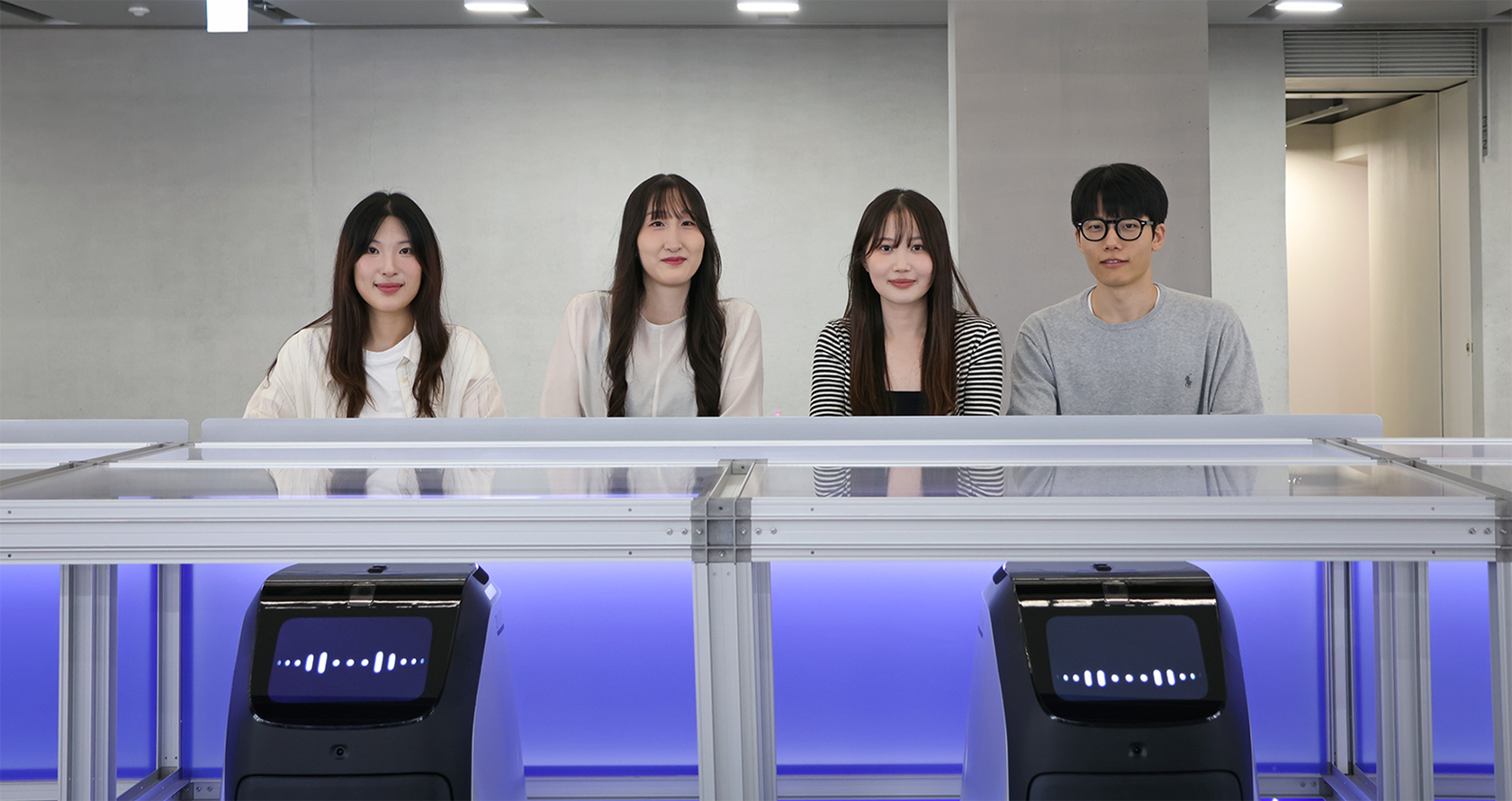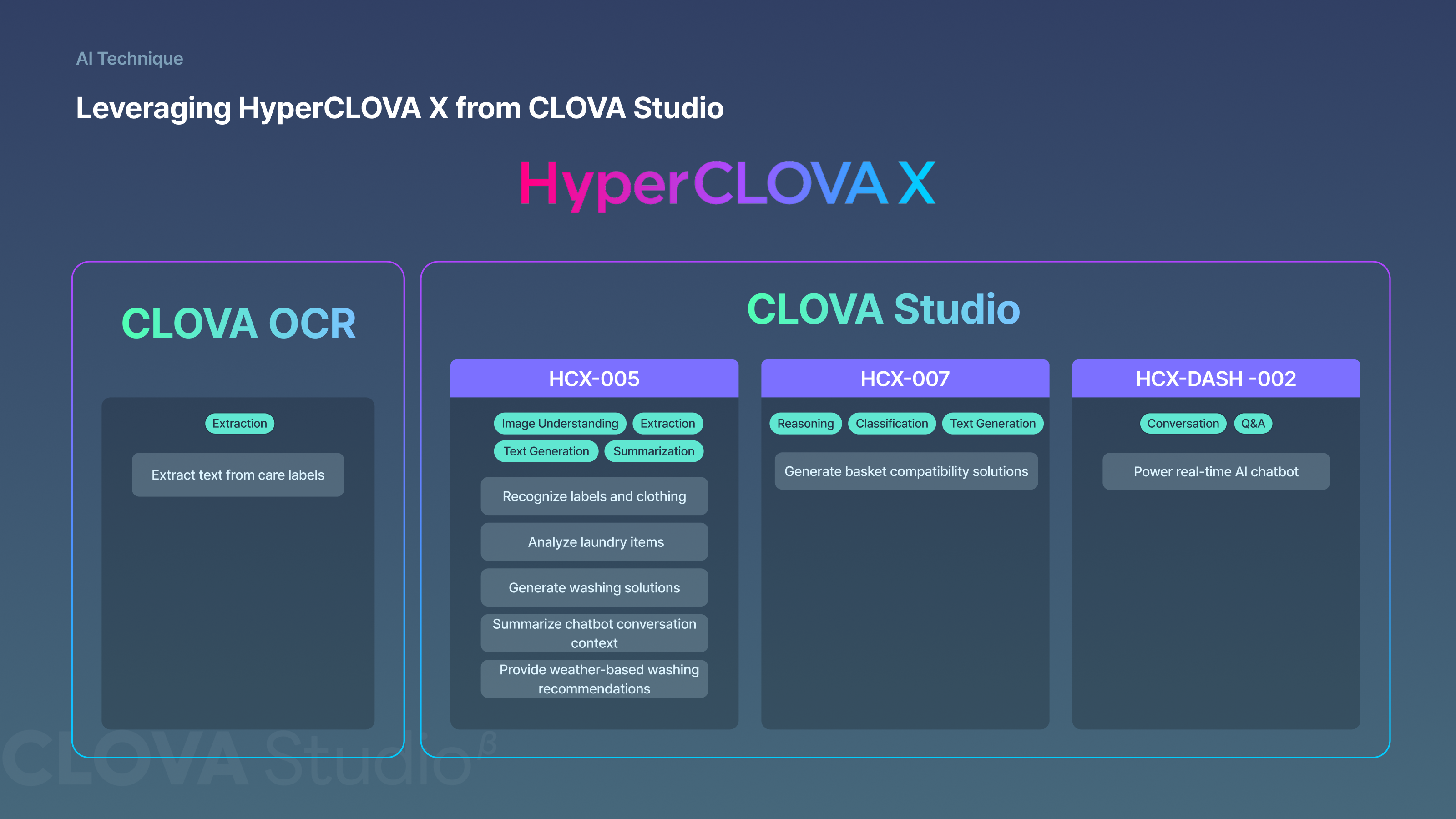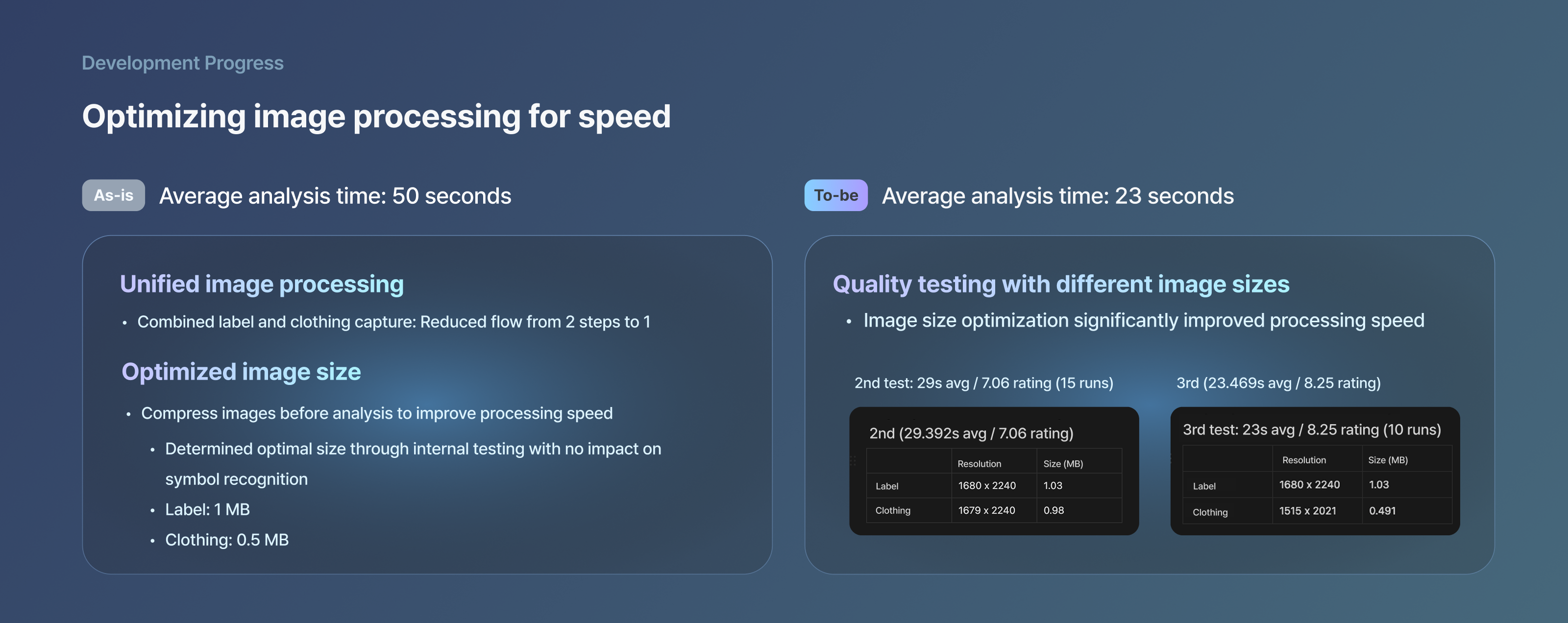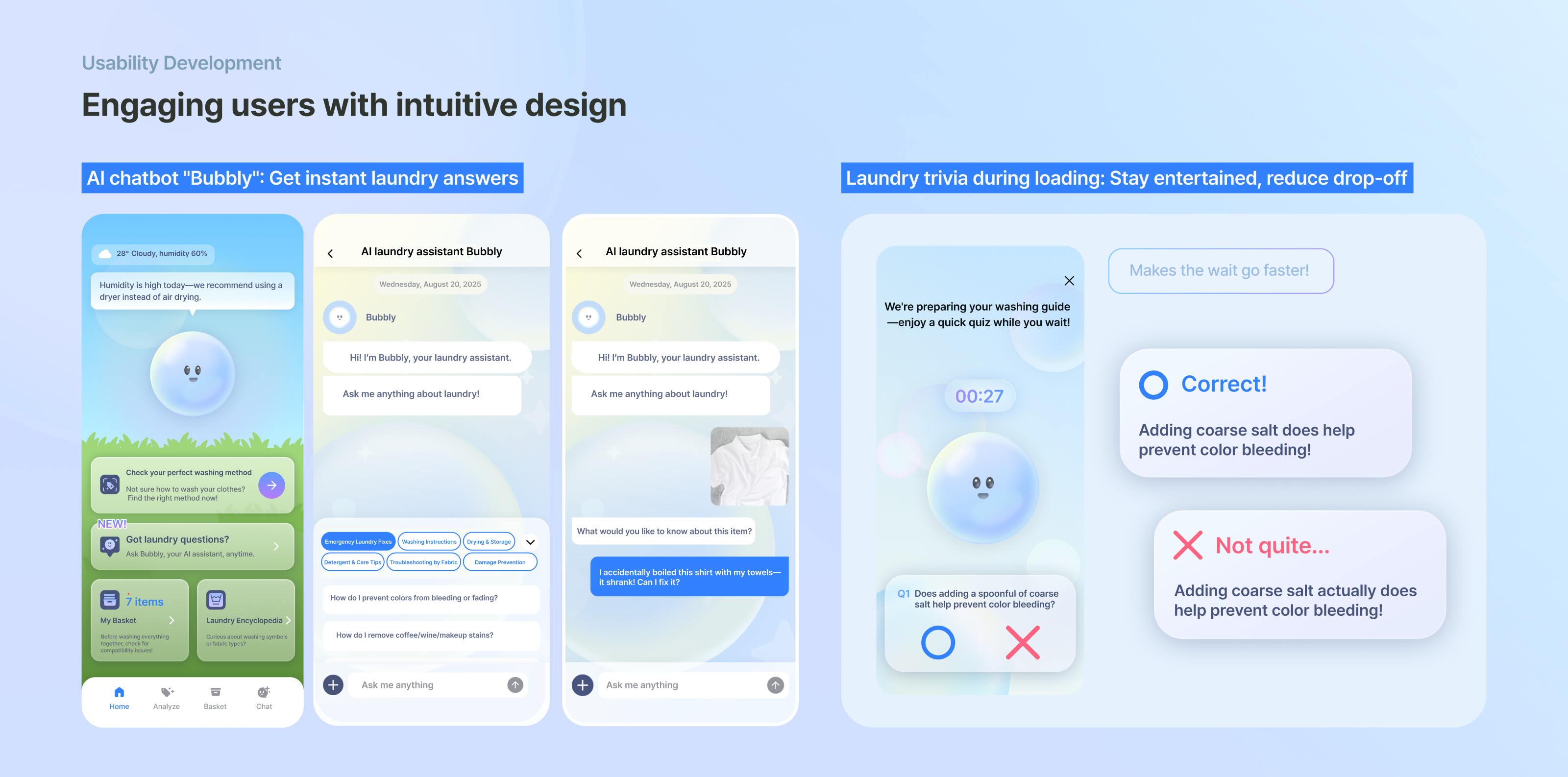The AI POTENDAY—a ten-day hackathon without the all-nighters—returned for its fourth edition this August. Now in its second year with NAVER Cloud, this online event focuses on encouraging broader AI adoption while supporting the next generation of developers.
This August, Team Laundreader claimed first place with an AI-powered laundry care assistant. The idea was sparked by a universal frustration: accidentally shrinking or discoloring your favorite clothes in the wash. That everyday mishap inspired Laundreader, a service that prevents laundry disasters by levaraging NAVER Cloud’s AI technologies, including HyperCLOVA X and CLOVA OCR.
We sat down with planner Eunsoo Ahn, designer Jaeiee Kim, backend developer Chaewon Eom, and frontend developer Chungu Yi at NAVER’s 1784 headquarters to learn how they built their award-winning AI solution.
An AI assistant for “a life without washing mistakes”
Jaeiee (Designer): When users upload photos of care labels, Laundreader analyzes them to provide AI-powered washing instructions tailored to each fabric. If you’re living on your own or running a single-person household, you’ve probably experienced this—squinting at tiny text and cryptic symbols, only to end up damaging your clothes. Laundreader eliminates those mishaps to create “a life without washing mistakes.”
Eunsoo (Planner): Traditional laundry services focus on doing the washing for you. We wanted to empower users instead—providing a tailored solution to help them understand how to care for their clothes properly. Beyond washing guidance, Laundreader provides drying and storage instructions. When washing multiple items, our Basket feature checks fabric compatibility so users can plan efficient care routines. For those curious about fabric care, the Laundry Encyclopedia and real-time chatbot offer additional insights.
How HyperCLOVA X powers label analysis
Chungu (Frontend Developer): The heart of Laundreader is label analysis. We used CLOVA OCR to read text on care labels and HyperCLOVA X Vision to interpret icons and symbols.
CLOVA OCR, NAVER’s AI text recognition technology, converts printed text into structured data with exceptional accuracy—even handling small fonts, curved surfaces, and complex backgrounds. It performed especially well with care labels captured under varied conditions and fabric textures.
HyperCLOVA X Vision takes this further. As a multimodal model, it understands visual information and relationships between objects in images, interpreting symbols and text together to extract meaning. This makes it ideal for care labels, where icons and text coexist. HyperCLOVA X then synthesizes this analysis to deliver fabric-specific washing instructions and precautions.
The team deployed three models from the HyperCLOVA X lineup, each optimized for specific functions:
- HCX-005: Provides precise image analysis and accurate interpretation
- HCX-007: A reasoning model that excels at classifying complex data to determine optimal washing methods
- HCX-DASH: A lightweight model powering the real-time chatbot for fast response times
By combining these models strategically, Laundreader achieves both accuracy and speed in its AI-powered laundry assistant.
Building reliable AI responses through structured prompt design
Chaewon (Backend Developer): Laundreader integrates OCR, vision, and reasoning models to deliver far more nuanced guidance than a single generative model like GPT could provide. The key was prompt design—we invested significant time refining how each model receives and interprets instructions. We followed four main principles: clearly defining roles and goals, specifying precise input data, structuring step-by-step instructions, and reinforcing critical rules.
We broke each prompt into independent modules and standardized them using JSON—a text-based format that’s easy to read and write—then connected them in sequence. We made input data as specific as possible so the AI wouldn’t get confused, and laid out step-by-step instructions to improve accuracy. We also repeatedly reinforced key rules to minimize errors. This structured approach helped our AI models clearly understand their role at each step, leading to more reliable and consistent results.
Optimizing image processing for real-time results
Chungu: The biggest challenge we faced while building the service was improving AI analysis speed. Any delay in recognizing laundry label images and providing washing instructions would directly impact user experience, so we focused on speeding up the analysis.
First, we ran multiple tests on the relationship between image file size and response time to find the optimal image dimensions. We also streamlined our original process—which analyzed laundry labels and clothing photos separately—into a single integrated workflow, cutting total processing time by nearly half.
Creating user-friendly experiences with intuitive design
Chungu: We spent a lot of time on UI and UX to help users feel comfortable with the AI features. We wanted the washing advice to sound like tips from a friendly laundry expert, so we made the tone conversational and warm. We also created a cute mascot called “Bubbly” to make the whole experience more welcoming.
We also added a gamification element to it to reduce user drop-off. While the AI analyzes images, we included fun laundry trivia to keep users entertained during the wait. Users told us “the waiting felt less boring,” which confirmed these little details really made a difference.
Fast validation and deployment with CLOVA Studio
Chaewon: This project was my first time developing an AI-powered service. Thanks to CLOVA Studio’s intuitive interface and user-friendly design, I was able to build a functional service even without much experience with AI models.
The biggest advantage of CLOVA Studio is that you can work with AI models using just text —no coding or complex setup. I could write prompts, test them instantly in the browser, and quickly try out different features. That’s how we managed to build a complete service in just 10 days.
Bringing AI into daily life with CLOVA Studio
The Laundreader team’s mission to create “a life without washing mistakes” shows how AI can be woven into everyday life to solve real, relatable problems. Using CLOVA Studio’s easy development tools and quick testing process alongside HyperCLOVA X’s models, they built a service that’s accurate, fast, and user-friendly—covering everything from care label recognition to chatbot responses.
We hope Laundreader’s approach to tackling everyday laundry problems with technology inspires others who want to use AI to solve life’s daily frustrations.







